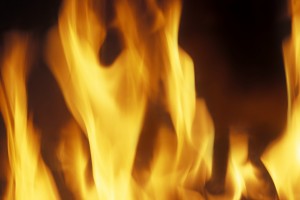Most of us learn that the right way to build a fire is to place kindling on the bottom and rest small sticks against each other, creating a teepee look. Next, larger pieces of wood are placed around the teepee, also propped against each other, and finally logs are laid on the top. Newspaper is crumpled and stuffed into the kindling and lit with a match.

The typical results of using this method to light a fire are the failure of the newspaper to catch fire, lots of smoke and few flames, a fire that fails to take hold and kindling burnt with nothing to show for it. There is, however, another way to light a fire. The top down approach reverses the order in which logs, wood, sticks and kindling are piled in the fireplace, making it easier to light and offering numerous other benefits. Among those benefits is less smoke.
In addition, heavier pieces of wood will no longer crash down onto smaller, lighter pieces below, scattering the coals and sending sparks flying into the room. Perhaps most importantly, you no longer need to get on your knees to light it and blow air across it. The mere image of this evokes quite a dangerous setting.
Simply start by putting your larger logs on the grate in the fireplace. Do not place them parallel to the fireplace opening. Lay them front to back, so that the cut edge is what you see. Add smaller pieces of wood on top of those until half the height of the fireplace is filled. Next come the sticks, scattered evenly on top of the pile, topped with kindling and wood shavings. Those are what you light by simply touching a match to them.
This method of fire building is so simple and fool-proof, you will never build a fire the other way again. It is a bit of a mystery why this approach is not more commonly used or taught. Perhaps the difficulty of building a good, hot fire is part of its enjoyment.
